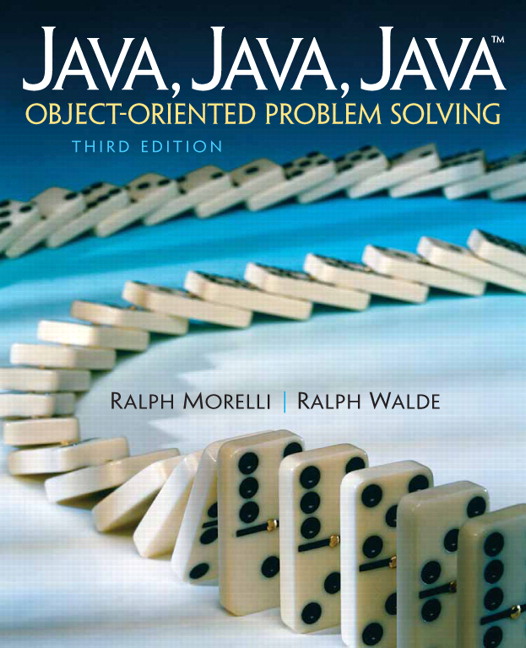Preface Object-Early Approach
This edition still takes an objects-early approach to teaching Java, with the assumption that teaching beginners the "big picture" early gives them more time to master the principles of object-oriented programming. This approach seems now to have gained in popularity as more and more instructors have begun to appreciate the advantages of the object-oriented perspective. Object Orientation (OO) is a fundamental problem solving and design concept, not just another language detail that should be relegated to the middle or the end of the book (or course). If OO concepts are introduced late, it is much too easy to skip over them when push comes to shove in the course.
Today, the main hurdle for beginners is the concept of object abstraction. Beginning programmers must be able to see a program as a collection of interacting objects and must learn how to decompose programming problems into well-designed objects. Object orientation subsumes both procedural abstraction and structured programming concepts from the Pascal days. Teaching objects-early takes a top-down approach to these three important concepts. The sooner you begin to introduce objects and classes, the better the chances that students will master the important principles of object orientation.
Java is a good language for introducing object orientation. Its object model is better organized than C++. In C++ it is easy to "work around" or completely ignore OO features and treat the language like C. In Java there are good opportunities for motivating the discussion of object orientation. For example, it’s almost impossible to discuss GUI-based Java applications without discussing inheritance and polymorphism. Thus rather than using contrived examples of OO concepts, instructors can use some of Java’s basic features — the class library, Swing and GUI components — to motivate these discussions in a natural way.

